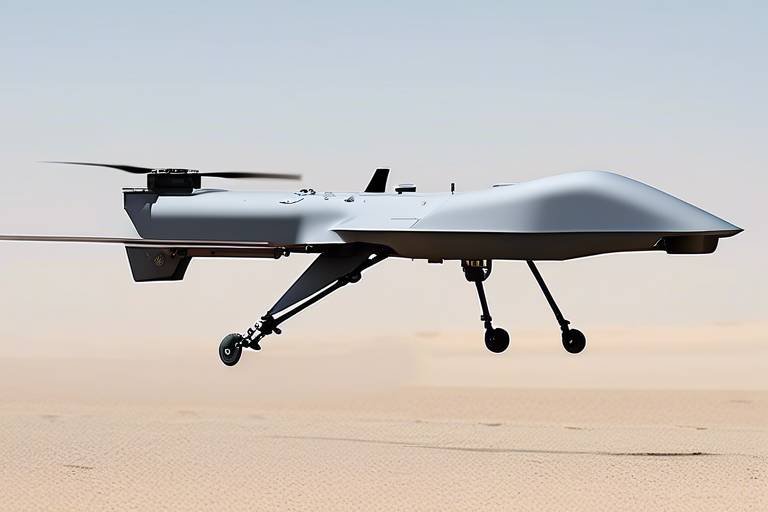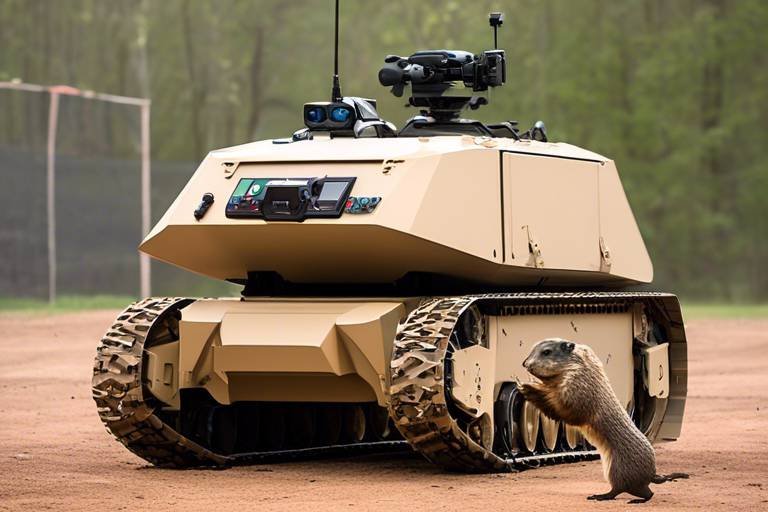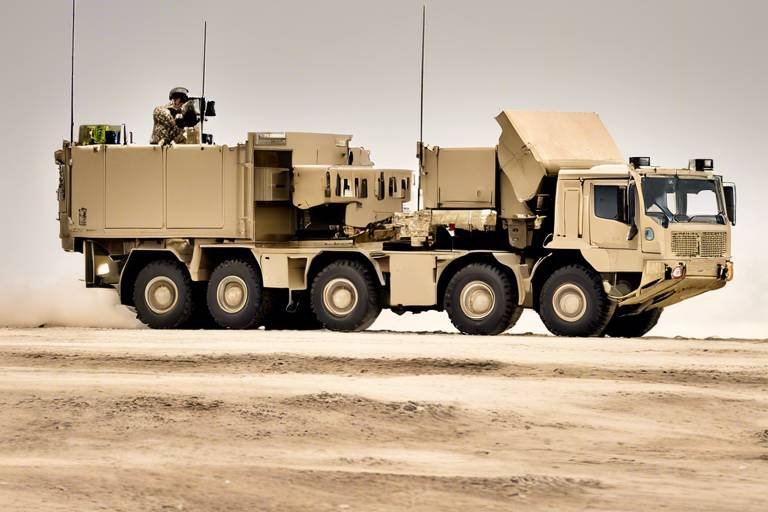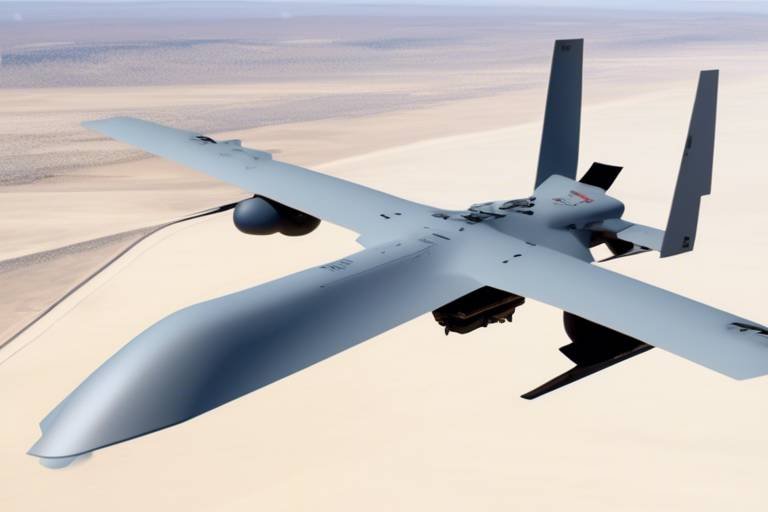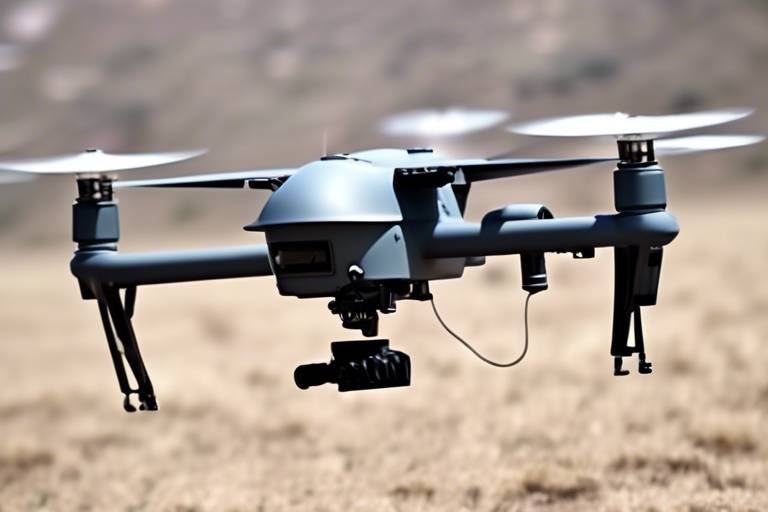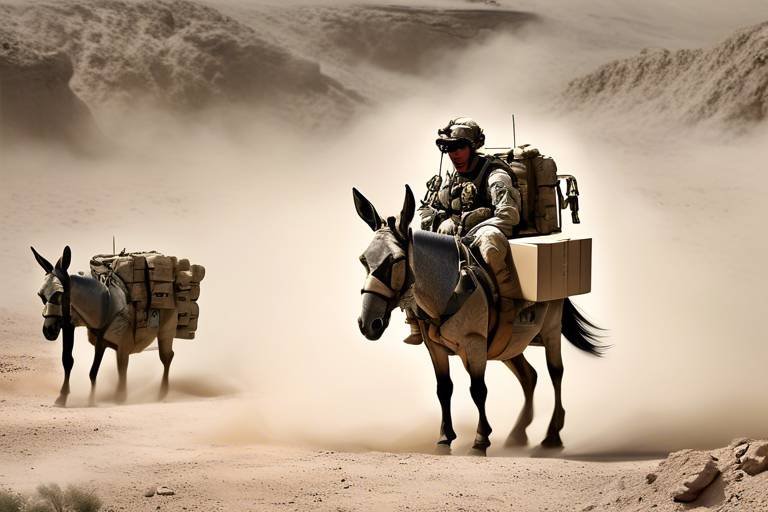How the RQ-11 Raven UAV Enhances Tactical Situational Awareness
The RQ-11 Raven UAV is a game-changer in the realm of military reconnaissance and surveillance. Imagine being able to see the battlefield from above, gaining insights that ground troops simply can't access. This small, lightweight unmanned aerial vehicle (UAV) is not just a technological marvel; it is a lifeline for tactical teams operating in diverse environments. With its ability to provide real-time data and high-resolution imagery, the Raven enhances situational awareness like never before. But how does it do this? Let's dive deeper into the capabilities and features that make the RQ-11 Raven an indispensable tool for modern military operations.
The RQ-11 Raven is engineered for versatility and efficiency. Weighing less than 5 pounds, this UAV can be easily transported by infantry units, making it an ideal companion for tactical missions. Whether it's urban warfare or rugged terrain, the Raven adapts seamlessly to various operational settings. It can be launched by hand, making it incredibly user-friendly, even for those with minimal technical expertise. The compact design allows for quick deployment, ensuring that troops can gather crucial intelligence without delay. In a world where information can be the difference between victory and defeat, the Raven stands out as a powerful ally.
The RQ-11 Raven is packed with advanced features that elevate its reconnaissance capabilities. From real-time video streaming to GPS navigation, this UAV is designed to gather critical intelligence quickly and efficiently. Imagine being able to monitor enemy movements or assess battlefield conditions in real-time—all from a device that fits in the palm of your hand. The integration of autonomous flight capabilities further enhances its operational effectiveness, allowing for pre-programmed missions that reduce the workload on operators.
One of the standout features of the RQ-11 is its ability to transmit real-time video feeds back to ground troops. This capability is a game-changer for situational awareness. When soldiers are in the heat of battle, having immediate visual information can be the difference between making a strategic decision or falling into a trap. The UAV acts as an eye in the sky, providing live updates that allow commanders to adapt their strategies on the fly. It's like having a tactical advisor that never sleeps, constantly feeding you vital information.
But it doesn't stop there. The RQ-11 is equipped with high-resolution cameras that capture detailed imagery, which is crucial for accurate target identification and assessment. Think of it as a pair of binoculars that can see not just far but also with incredible clarity. This level of detail facilitates effective mission planning and execution, enabling military units to make informed decisions based on reliable data. The power of visual intelligence cannot be overstated; it transforms foggy battlefield uncertainties into clear operational insights.
Moreover, the RQ-11 can integrate seamlessly with existing command and control systems. This means that data collected during flights can be analyzed and utilized for strategic planning and operational adjustments. It’s like having a smart assistant that not only gathers information but also helps you make sense of it. By integrating various data points, military leaders can gain a comprehensive view of the battlefield, enhancing their ability to respond to evolving threats.
The autonomous flight capabilities of the RQ-11 are another feather in its cap. This UAV can execute pre-programmed missions, which significantly reduces the workload on operators. Imagine being able to send the Raven on a reconnaissance mission while you focus on coordinating troop movements on the ground. This autonomy allows for more efficient use of resources and personnel, ensuring that tactical objectives can be met without compromising safety or effectiveness.
In tactical scenarios, the RQ-11 Raven provides significant operational advantages. Its enhanced reconnaissance capabilities allow military units to maintain situational awareness and adapt strategies based on current battlefield conditions. By utilizing the Raven for reconnaissance, ground troops can minimize exposure to threats, enhancing their safety while conducting operations in hostile territories. This dual benefit of intelligence gathering and troop safety makes the RQ-11 an invaluable asset in modern warfare.
With the Raven, military units can gather and relay information in real-time, allowing them to adapt their strategies on the battlefield. This capability is crucial in dynamic environments where conditions can change rapidly. The UAV acts as a force multiplier, providing commanders with the insights they need to make informed decisions quickly. It's like having a tactical map that updates itself in real-time, ensuring that you are always a step ahead of the enemy.
By utilizing the RQ-11 for reconnaissance, ground troops can operate with enhanced safety. The UAV can scout ahead, identifying potential threats before soldiers even set foot in a dangerous area. This proactive approach to reconnaissance minimizes exposure to enemy fire and increases the likelihood of mission success. In essence, the Raven allows troops to fight smarter, not harder.
Despite its numerous advantages, the RQ-11 Raven is not without its challenges. One of the primary limitations is its flight time and range. The UAV has a limited operational range and flight duration, which can restrict its effectiveness in extended missions or large operational areas. Additionally, adverse weather conditions can impact the UAV's performance, necessitating careful planning and consideration when deploying the Raven in challenging environments.
While the RQ-11 is incredibly useful, its operational range and flight duration can be a double-edged sword. Extended missions may require multiple UAVs or careful timing to ensure continuous coverage. This limitation underscores the importance of strategic planning in military operations.
Adverse weather conditions, such as high winds or rain, can also impact the UAV's performance. Operators must be aware of these constraints and plan accordingly to maximize the effectiveness of the Raven in the field. It's a reminder that even the most advanced technology has its limitations, and human judgment remains a critical component of successful military operations.
- What is the RQ-11 Raven used for? The RQ-11 Raven is primarily used for reconnaissance and surveillance in military operations.
- How long can the RQ-11 fly? The RQ-11 has a limited flight time, typically around 60 to 90 minutes, depending on conditions.
- Can the RQ-11 operate in adverse weather? While the RQ-11 can operate in various conditions, severe weather can impact its performance.
- Is the RQ-11 easy to operate? Yes, the RQ-11 is designed for ease of use, making it accessible even to operators with minimal training.
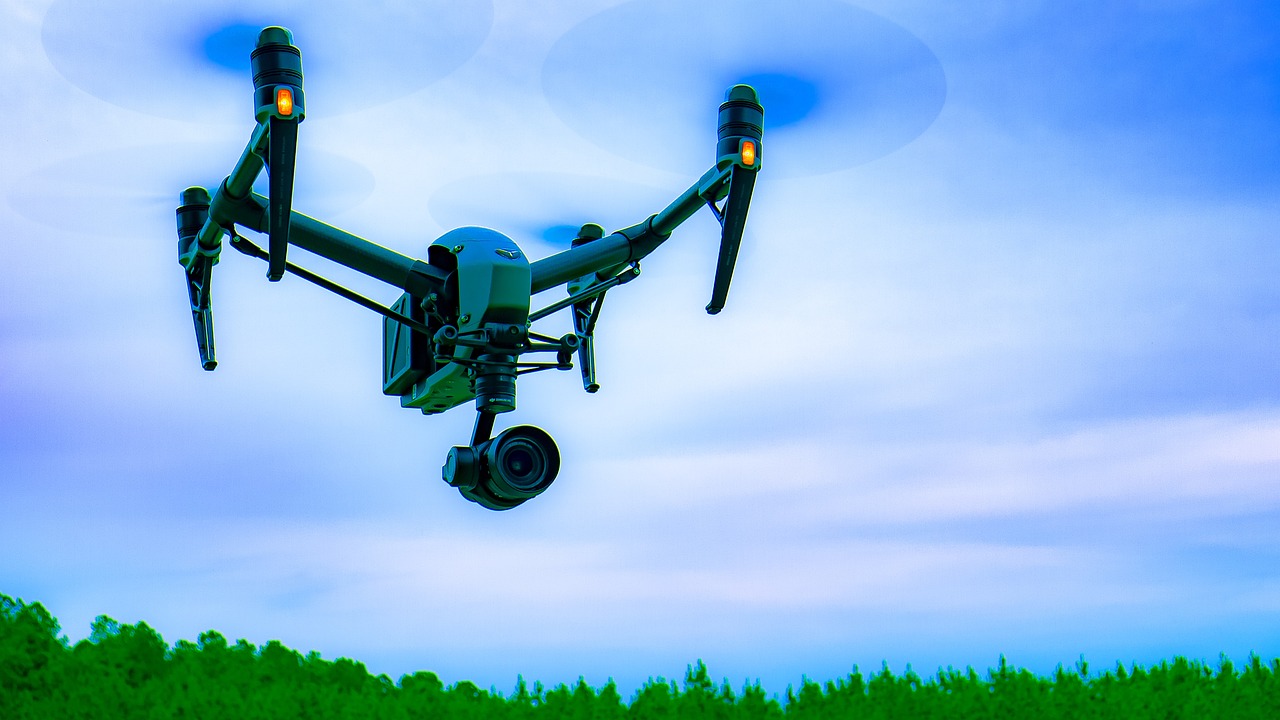
Overview of the RQ-11 Raven UAV
This article explores the RQ-11 Raven UAV's capabilities, features, and impact on military operations, focusing on how it improves situational awareness for tactical teams in various environments.
The RQ-11 Raven is not just any drone; it's a small, lightweight UAV specifically engineered for reconnaissance and surveillance missions. Imagine a bird that can soar high above the battlefield, offering a bird's-eye view of the terrain below. Its compact size—about the length of a football—enables it to fit into tight spaces, making it an ideal choice for tactical operations in diverse environments, from urban landscapes to rugged terrains. This versatility allows military teams to deploy the Raven quickly and effectively, ensuring they have the upper hand in gathering intelligence.
One of the standout features of the RQ-11 is its ability to operate in various conditions. Whether it’s a hot desert or a cold mountainous region, this UAV can adapt, providing real-time data that is crucial for mission success. With a wingspan of just over four feet, it can be launched manually or from a small catapult, making it an incredibly flexible tool for ground troops. The UAV's operational capabilities are enhanced by its lightweight construction, which allows for easy transport and rapid deployment. This means that soldiers can carry several units in their packs, ready to be deployed at a moment’s notice, ensuring that they are always prepared for any situation.
The RQ-11 Raven is equipped with advanced technology that enhances its operational effectiveness. It boasts a suite of sensors and cameras capable of capturing high-resolution imagery and video, allowing operators to monitor enemy movements and assess battlefield conditions in real-time. This capability is not just a luxury; it’s a game-changer in modern warfare. The intelligence gathered can be used to inform tactical decisions, plan missions, and even assist in coordinating air support. In essence, the RQ-11 acts as the eyes and ears of ground troops, ensuring they are always one step ahead of potential threats.
Furthermore, the integration of GPS and autonomous flight capabilities allows the Raven to follow pre-programmed routes, freeing up operators to focus on other critical tasks. This autonomy is particularly important in high-stress situations where every second counts. Operators can set the UAV to survey an area while they concentrate on analyzing incoming data, significantly enhancing their situational awareness and decision-making abilities.
In summary, the RQ-11 Raven UAV stands out as a vital asset for modern military operations. Its combination of mobility, advanced technology, and operational versatility makes it an indispensable tool for enhancing tactical situational awareness. As military strategies continue to evolve, the RQ-11 will undoubtedly play a crucial role in shaping the future of reconnaissance and surveillance.
The RQ-11 boasts several advanced features, including real-time video streaming, GPS navigation, and autonomous flight capabilities, enabling operators to gather critical intelligence quickly and efficiently.
Real-time video feeds from the RQ-11 enhance situational awareness by providing immediate visual information to ground troops, allowing for informed decision-making during missions and engagements.
The UAV's high-resolution cameras capture detailed imagery, facilitating accurate target identification and assessment, which is crucial for effective mission planning and execution.
The RQ-11 can integrate with existing command and control systems, allowing data collected during flights to be analyzed and utilized for strategic planning and operational adjustments.
With its autonomous flight capabilities, the RQ-11 can execute pre-programmed missions, reducing the workload on operators and allowing for more focus on tactical objectives.
The RQ-11 Raven provides significant operational advantages, including enhanced reconnaissance capabilities, improved troop safety, and the ability to operate in challenging environments.
The UAV's ability to gather and relay information in real-time allows military units to maintain situational awareness and adapt strategies based on current battlefield conditions.
By utilizing the RQ-11 for reconnaissance, ground troops can minimize exposure to threats, enhancing their safety while conducting operations in hostile territories.
Despite its advantages, the RQ-11 faces challenges such as limited flight time, susceptibility to environmental factors, and the need for skilled operators to maximize its potential.
The RQ-11 has a limited operational range and flight duration, which can restrict its effectiveness in extended missions or large operational areas.
Adverse weather conditions can impact the UAV's performance, necessitating careful planning and consideration when deploying the Raven in challenging environments.
- What is the maximum flight time of the RQ-11 Raven? The RQ-11 has a maximum flight time of approximately 60 to 90 minutes, depending on conditions.
- Can the RQ-11 operate in adverse weather? While the RQ-11 can handle some environmental challenges, severe weather can limit its operational capabilities.
- Is the RQ-11 easy to operate? Yes, but it requires trained personnel to maximize its potential and ensure effective mission execution.
- What types of missions is the RQ-11 best suited for? The RQ-11 is primarily designed for reconnaissance, surveillance, and intelligence gathering.

Key Features of the RQ-11 Raven
The RQ-11 Raven is not just any drone; it’s a game-changer in the world of tactical reconnaissance. With its impressive array of features, this small yet powerful UAV is engineered to provide military teams with unparalleled situational awareness. Imagine being able to see what’s happening on the ground in real-time, all while staying at a safe distance. That’s precisely what the Raven offers. Its design is tailored for versatility, which means it can adapt to various operational environments, whether it’s urban landscapes or rugged terrains.
One of the standout features of the RQ-11 Raven is its real-time video streaming. This capability allows operators to receive live feeds from the UAV, providing immediate visual intelligence that can be crucial during missions. Think about it: in the heat of battle, having access to real-time imagery can be the difference between success and failure. Ground troops can make informed decisions based on what they see, allowing them to adjust their strategies on the fly.
Additionally, the Raven is equipped with GPS navigation, which enhances its operational efficiency. This feature ensures that the UAV can navigate complex environments with ease, following pre-programmed flight paths while maintaining precise positioning. Operators can focus on analyzing the data rather than worrying about the drone’s flight path. This capability is particularly useful in scenarios where time is of the essence, and every second counts.
When it comes to real-time video and data transmission, the RQ-11 Raven excels beyond expectations. The UAV is equipped with high-definition cameras that provide crystal-clear imagery, ensuring that operators can identify targets accurately. This feature is especially vital during reconnaissance missions, where understanding the battlefield landscape can significantly impact mission outcomes. The ability to relay information instantly means that tactical teams can stay ahead of the curve, responding to threats as they arise.
The high-resolution cameras on the RQ-11 are designed to capture detailed images, which can be critical for effective mission planning. Imagine trying to identify an enemy position or assess damage after an engagement; having high-quality images at your disposal allows for better strategic decisions. This capability not only aids in target identification but also enhances overall situational awareness, providing a clearer picture of the operational environment.
Another impressive feature of the RQ-11 Raven is its ability to integrate with existing command and control systems. This means that the data collected during flights can be analyzed in real-time and utilized for strategic planning and operational adjustments. The integration of this data allows military commanders to have a comprehensive view of the battlefield, enabling them to make informed decisions based on current intelligence. It’s like having a tactical advisor in the sky, feeding you information that could change the course of an operation.
Lastly, let’s talk about autonomy and flight performance. The RQ-11 can execute pre-programmed missions autonomously, which significantly reduces the workload on operators. This autonomy allows personnel to focus on tactical objectives rather than the intricacies of piloting the UAV. With its reliable flight performance, the Raven can cover various terrains and adapt to changing conditions, making it a versatile tool in any military operation.
In summary, the RQ-11 Raven UAV is a powerhouse of technology that enhances tactical situational awareness. With its real-time video streaming, high-resolution imaging, data integration capabilities, and autonomous flight performance, it stands as an invaluable asset for military operations. Its ability to adapt to various environments while providing critical intelligence makes it a vital component in modern warfare.
- What is the range of the RQ-11 Raven? The RQ-11 has an operational range of approximately 10 kilometers, depending on environmental conditions.
- How long can the RQ-11 stay in the air? The UAV can fly for about 60 to 90 minutes on a single charge, which can vary based on its operational use.
- Is the RQ-11 easy to operate? Yes, the RQ-11 is designed for ease of use, but operators require training to maximize its capabilities effectively.
- Can the RQ-11 be used in adverse weather conditions? While it is built to handle some environmental challenges, extreme weather can affect its performance.
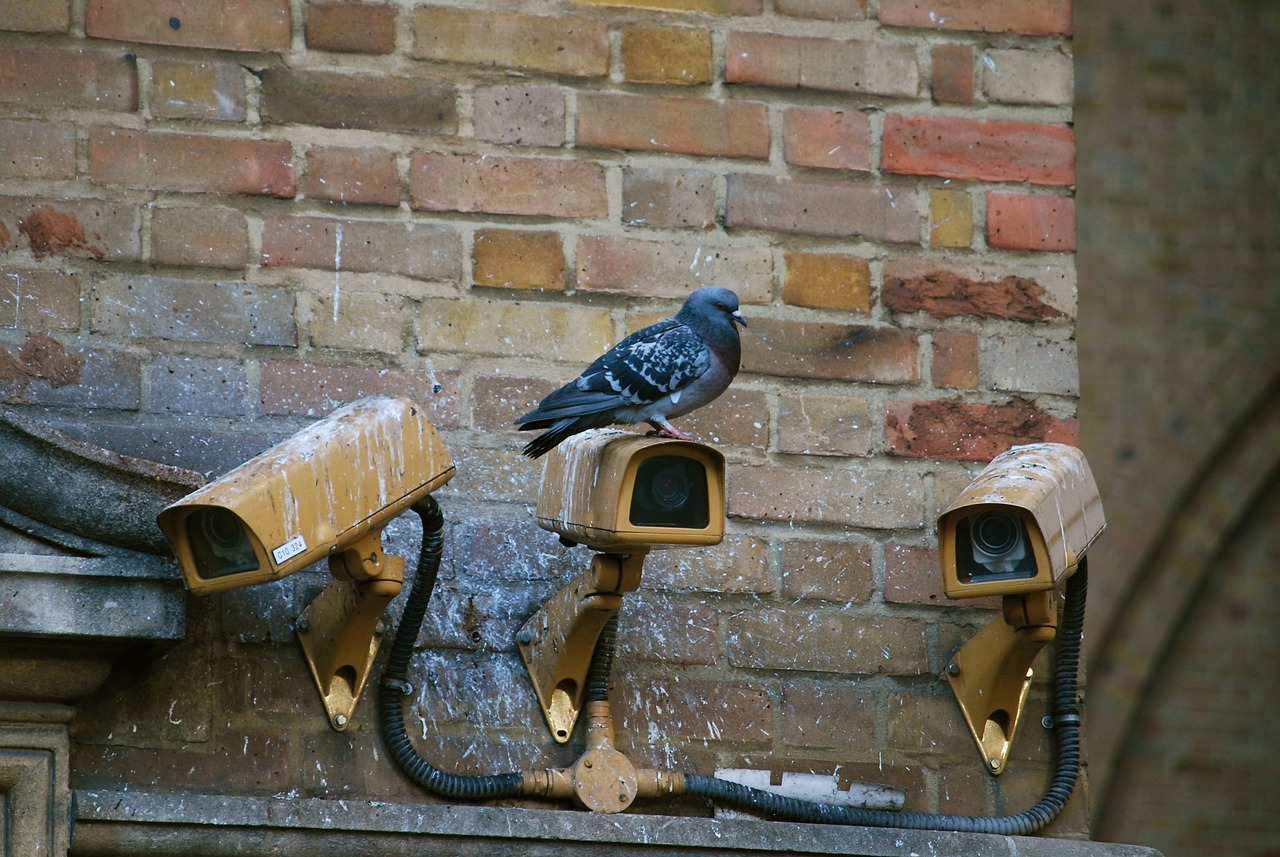
Real-Time Video and Data Transmission
The RQ-11 Raven UAV stands out in the realm of tactical reconnaissance primarily due to its exceptional capabilities. Imagine being on the battlefield, where every second counts, and having access to live video feeds that can change the course of action in an instant. This is precisely what the Raven offers—a direct line of sight into the operational environment, allowing ground troops to stay one step ahead of potential threats.
Equipped with advanced cameras, the RQ-11 can stream high-definition video directly to operators on the ground. This feature is not just a luxury; it's a necessity. When troops are in hostile territory, the ability to see what lies ahead can be the difference between success and failure. For instance, if a unit is approaching a suspected enemy position, the UAV can scout the area and provide live video feeds, highlighting enemy movements or potential ambush sites. This capability empowers commanders to make informed decisions based on real-time data rather than relying on outdated intelligence.
Furthermore, the RQ-11's video feeds are complemented by its ability to transmit other critical data, such as GPS coordinates and environmental conditions. This integration of video and data allows for a comprehensive understanding of the battlefield. Operators can analyze the situation and adapt their strategies accordingly. For example, if the UAV detects an unexpected change in enemy positions, commanders can quickly reposition their forces or alter their approach, significantly increasing their chances of mission success.
In addition to enhancing situational awareness, the RQ-11's real-time capabilities also facilitate improved communication among team members. The UAV can serve as a central hub for information, relaying data to various units and ensuring that everyone is on the same page. This is especially critical in complex operations where coordination is key. By utilizing the RQ-11, military teams can maintain a cohesive strategy, reducing the likelihood of miscommunication and confusion during high-stakes engagements.
To summarize, the RQ-11 Raven's real-time video and data transmission capabilities provide tactical teams with a powerful tool for enhancing situational awareness. With live feeds that allow for immediate decision-making, comprehensive data integration, and improved communication, the Raven transforms the way military operations are conducted. In a world where information is power, the RQ-11 ensures that ground troops are never left in the dark.
- What is the range of the RQ-11 Raven UAV?
The RQ-11 has an operational range of approximately 10 kilometers, allowing it to cover significant ground while providing real-time intelligence. - How long can the RQ-11 fly on a single charge?
The UAV can typically operate for about 60 to 90 minutes, depending on its mission profile and payload. - Can the RQ-11 be used in adverse weather conditions?
While the RQ-11 is designed for versatility, its performance can be affected by severe weather conditions such as heavy rain or strong winds. - What types of missions is the RQ-11 best suited for?
The RQ-11 is ideal for reconnaissance, surveillance, and target acquisition missions, particularly in tactical scenarios where real-time data is critical.
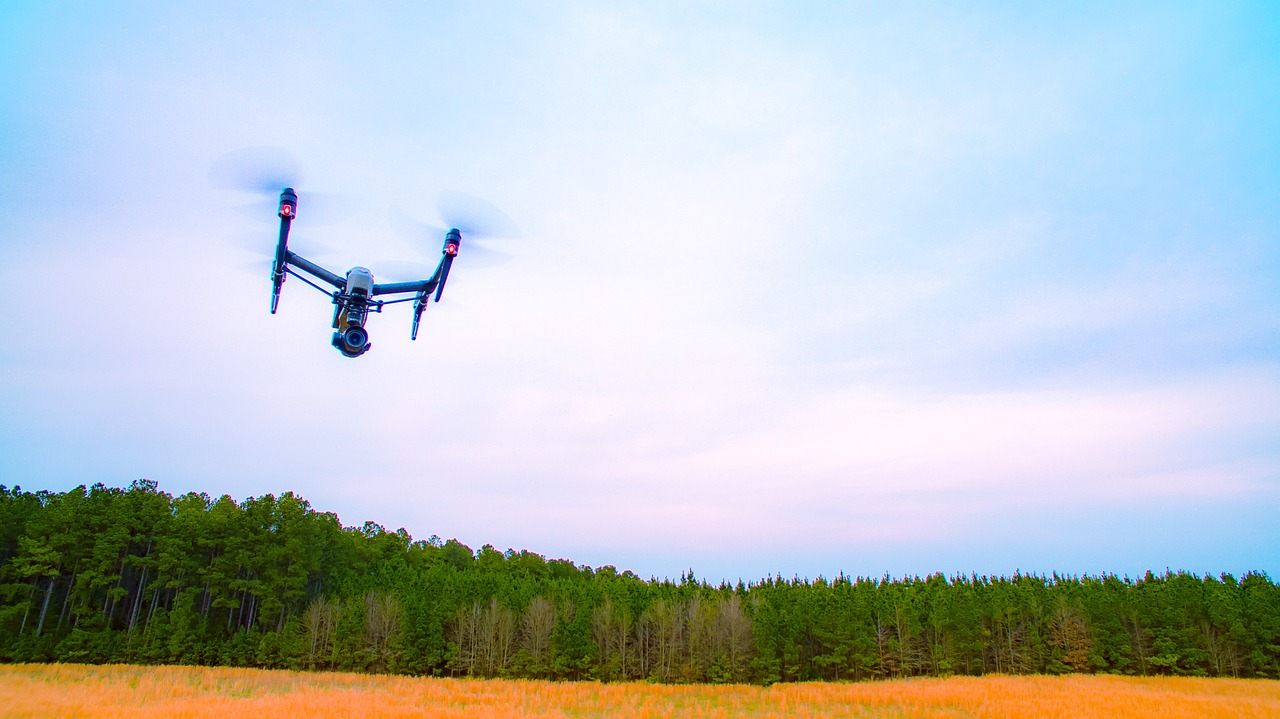
High-Resolution Imaging Capabilities
The RQ-11 Raven UAV is equipped with that set it apart from many other unmanned aerial vehicles on the market. Imagine being able to see the battlefield as clearly as if you were right there on the ground. That’s the power of the Raven’s advanced camera systems. These cameras capture stunningly detailed imagery, allowing operators to identify and assess targets with remarkable accuracy. This capability is not just a luxury; it’s a necessity for successful mission planning and execution.
What makes the imaging capabilities of the RQ-11 truly impressive is its ability to operate in various lighting conditions. Whether it’s bright daylight or the shadowy depths of dusk, the Raven’s cameras adjust to provide clear visuals. This adaptability ensures that tactical teams can maintain situational awareness around the clock, no matter what the conditions may be. Furthermore, the UAV can transmit these high-resolution images in real-time, meaning that commanders can make informed decisions almost instantaneously.
To give you an idea of the technological prowess behind the RQ-11’s imaging system, here’s a breakdown of some of its key features:
| Feature | Description |
|---|---|
| Resolution | High-definition (HD) imaging for detailed target identification |
| Zoom Capability | Optical zoom allows for close-up views without losing image quality |
| Low-Light Performance | Enhanced sensors for clear imaging in low-light conditions |
| Real-Time Streaming | Instant transmission of images to ground control for immediate analysis |
This combination of features ensures that the RQ-11 Raven can provide critical intelligence that is essential for military operations. The detailed imagery assists not only in identifying enemy positions but also in understanding the geographical layout of the battlefield. This comprehensive situational awareness allows tactical teams to plan their movements with precision, reducing the risk of ambushes and improving overall mission success rates.
In addition to its tactical advantages, the high-resolution imaging capabilities of the RQ-11 also play a vital role in post-mission analyses. By reviewing the captured footage, military strategists can glean insights into the effectiveness of their operations, identify areas for improvement, and adapt future strategies accordingly. This continuous learning cycle fosters an environment of growth and adaptation, essential for any military unit aiming to maintain an edge over adversaries.
In summary, the high-resolution imaging capabilities of the RQ-11 Raven UAV are not just about capturing pretty pictures; they are about enhancing tactical effectiveness and ensuring that ground troops have the best possible information at their fingertips. The ability to see clearly from above transforms the way military operations are conducted, making the Raven an invaluable asset on the battlefield.
- What is the range of the RQ-11 Raven? The RQ-11 has an operational range of approximately 10 kilometers, depending on environmental conditions.
- How long can the RQ-11 stay in the air? The UAV can fly for about 60 to 90 minutes on a single charge, depending on its mission profile.
- Is the RQ-11 easy to operate? Yes, the RQ-11 is designed for ease of use, but operators require some training to maximize its potential.
- Can the RQ-11 operate in adverse weather conditions? While it can handle mild weather, extreme conditions like heavy rain or strong winds may affect its performance.

Data Analysis and Integration
The RQ-11 Raven UAV is not just a flying camera; it is a sophisticated tool that revolutionizes how military operations gather and analyze data. With its ability to integrate seamlessly with existing command and control systems, the Raven transforms raw data into actionable intelligence. Imagine having a bird’s-eye view of the battlefield, where every movement and change can be observed and analyzed in real-time. This capability allows tactical teams to make informed decisions quickly, adapting to the fluid dynamics of combat.
One of the standout features of the Raven is its data fusion capability. This means that it can collect various types of information—video feeds, thermal imagery, and GPS coordinates—and synthesize them into a comprehensive overview of the operational landscape. When operators receive this enriched data, they can assess threats more accurately and plan their next moves with greater confidence. The integration of data from the Raven with other intelligence sources creates a multi-dimensional picture of the battlefield, enhancing situational awareness significantly.
Furthermore, the RQ-11's data analysis tools allow for post-mission analysis. After a flight, operators can review the collected data to evaluate the effectiveness of their strategies and identify areas for improvement. This iterative process not only enhances future missions but also contributes to a growing repository of knowledge that can be leveraged across different units and operations. By continuously refining tactics based on real-world data, military forces can stay one step ahead of potential adversaries.
In practical terms, the integration of RQ-11 data can be visualized in a
| Data Type | Function | Benefit |
|---|---|---|
| Video Feeds | Real-time surveillance | Immediate situational awareness |
| Thermal Imaging | Night operations | Enhanced visibility in low light |
| GPS Data | Location tracking | Accurate positioning of assets |
| Sensor Data | Environmental monitoring | Informed operational planning |
Ultimately, the RQ-11 Raven UAV serves as a pivotal asset in the modern military's arsenal. Its capability to analyze and integrate data not only enhances the effectiveness of tactical teams but also ensures that they are better prepared to face the complexities of contemporary warfare.
- What is the RQ-11 Raven UAV used for?
The RQ-11 Raven is primarily used for reconnaissance and surveillance, providing real-time intelligence to military units. - How does the RQ-11 enhance situational awareness?
It provides real-time video feeds, high-resolution imaging, and integrates data with command systems, allowing for informed decision-making. - What are the limitations of the RQ-11?
It has limited flight time, operational range, and can be affected by adverse weather conditions. - Can the RQ-11 operate autonomously?
Yes, the RQ-11 can execute pre-programmed missions autonomously, allowing operators to focus on tactical objectives.
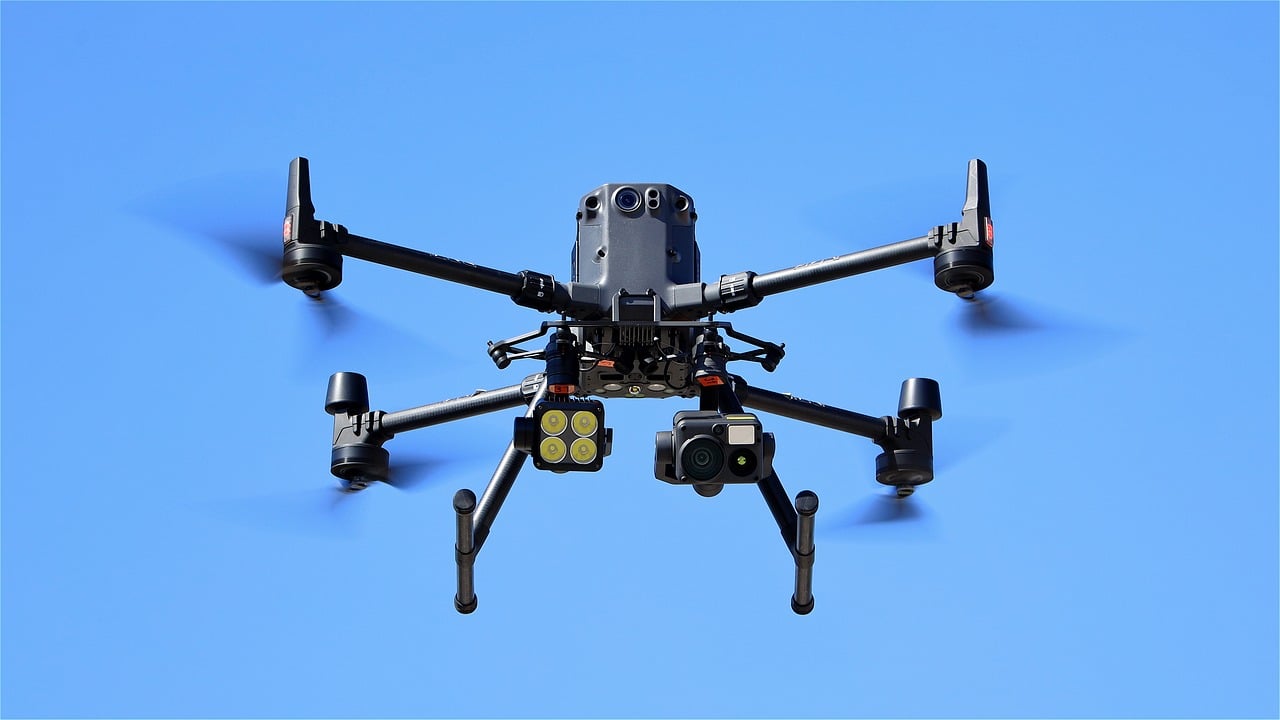
Autonomy and Flight Performance
The RQ-11 Raven UAV stands out in the realm of unmanned aerial vehicles, particularly due to its remarkable . This small yet powerful drone is designed to take on pre-programmed missions with minimal operator intervention, which significantly reduces the cognitive load on military personnel. Imagine being able to send a drone on a reconnaissance mission while you focus on strategizing the next move—this is the reality that the RQ-11 offers.
One of the key aspects of the Raven's autonomy is its ability to execute complex flight paths without requiring constant input from the ground control team. This feature not only enhances operational efficiency but also allows for the collection of vital intelligence in real-time. The UAV can navigate through various terrains, adapting its flight patterns based on pre-set parameters, which is particularly useful in unpredictable operational environments.
Moreover, the RQ-11 Raven is equipped with advanced flight performance capabilities that enable it to operate effectively under different conditions. Its lightweight design contributes to its agility, allowing it to maneuver quickly and evade potential threats. The UAV can reach an altitude of up to 15,000 feet, providing a significant vantage point for surveillance activities. The combination of altitude and speed ensures that the Raven can cover a wide area in a short amount of time, making it an indispensable asset on the battlefield.
To further illustrate the RQ-11's performance metrics, here’s a concise table highlighting its key specifications:
| Specification | Details |
|---|---|
| Wingspan | 4.5 feet |
| Flight Range | 10 km |
| Flight Time | Up to 90 minutes |
| Maximum Altitude | 15,000 feet |
| Speed | 20-60 knots |
This table underscores the RQ-11's ability to perform in various scenarios, making it a versatile tool for military operations. However, it's essential to note that while the Raven excels in autonomy, it still requires skilled operators who can program its missions effectively and analyze the data it collects. The synergy between human oversight and UAV autonomy creates a powerful dynamic that enhances military effectiveness.
In conclusion, the RQ-11 Raven's autonomy and flight performance are key elements that contribute to its operational success. By minimizing the need for constant human control, it allows military teams to concentrate on tactical objectives while still gathering crucial intelligence. This blend of technology and strategy not only improves situational awareness but also transforms the landscape of modern warfare.
- What is the RQ-11 Raven UAV used for? The RQ-11 Raven is primarily used for reconnaissance and surveillance missions in military operations.
- How long can the RQ-11 fly? The RQ-11 can fly for up to 90 minutes on a single charge.
- What is the maximum altitude the RQ-11 can reach? The UAV can reach altitudes of up to 15,000 feet.
- Does the RQ-11 require skilled operators? Yes, while the UAV has autonomous capabilities, it still requires skilled operators for mission programming and data analysis.
- What are the benefits of using the RQ-11 in military operations? The RQ-11 enhances situational awareness, improves troop safety, and allows for effective reconnaissance in challenging environments.
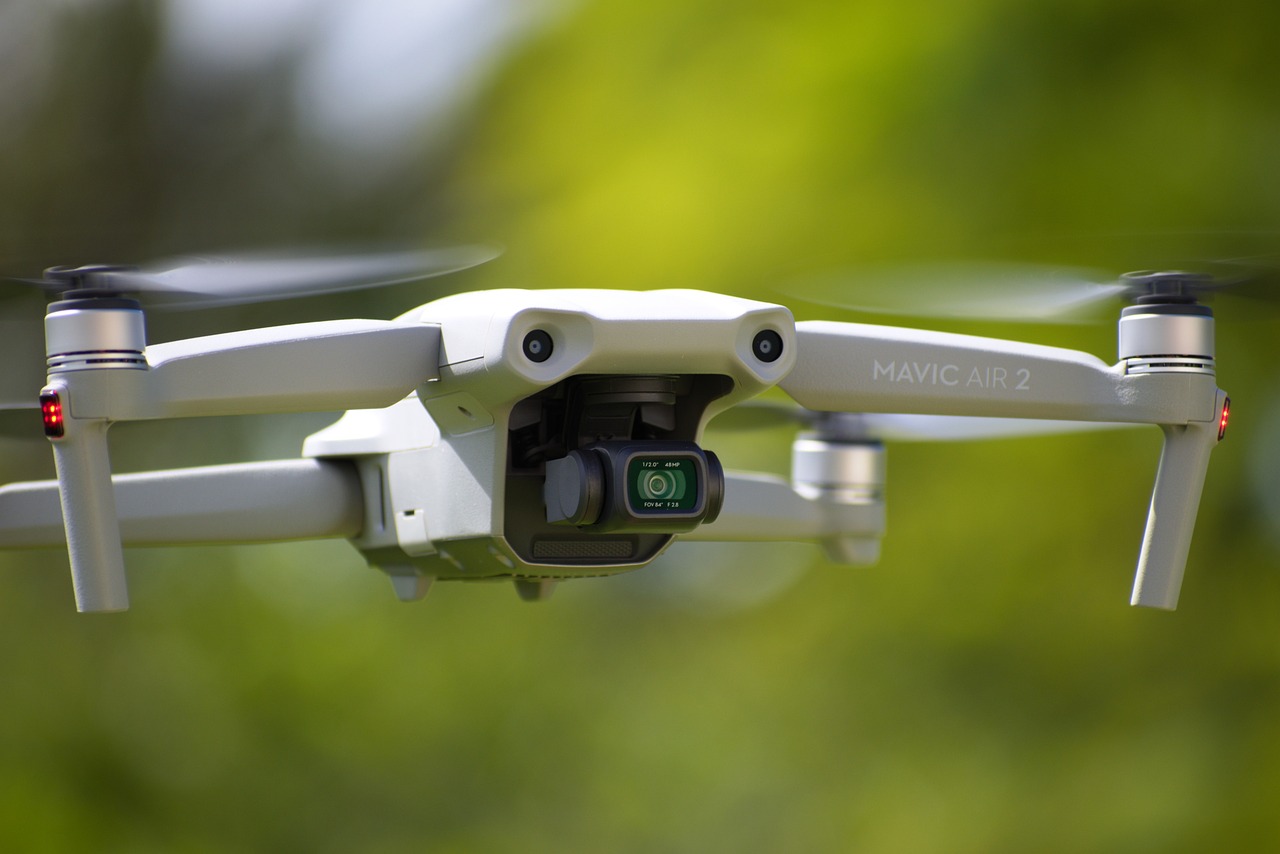
Operational Advantages in Tactical Scenarios
The RQ-11 Raven UAV is a game-changer in the realm of military operations, providing significant operational advantages that enhance the effectiveness of tactical teams in various scenarios. Imagine being able to have eyes in the sky, gathering crucial intelligence while minimizing the risk to ground troops. This is precisely what the Raven offers, allowing military units to stay one step ahead of the enemy.
One of the most notable advantages of the RQ-11 is its enhanced reconnaissance capabilities. The ability to gather and relay information in real-time transforms the way military units operate. For instance, during a mission, ground troops can receive immediate updates about enemy movements, terrain changes, and potential threats. This real-time data enables them to adapt their strategies on the fly, ensuring they remain agile and responsive to the ever-changing battlefield conditions.
Furthermore, the UAV significantly improves troop safety. Traditional reconnaissance methods often put soldiers in harm's way, exposing them to enemy fire and other dangers. By deploying the RQ-11 for reconnaissance, military personnel can gather vital information without putting themselves at risk. This not only enhances the safety of ground troops but also boosts their confidence, knowing they have reliable intel before engaging in operations.
Moreover, the RQ-11's versatility allows it to operate in challenging environments. Whether it’s dense urban areas, rugged terrains, or even adverse weather conditions, the Raven can adapt to various operational settings. Its small size and lightweight design enable it to navigate through tight spaces and gather intelligence where larger UAVs might struggle. This adaptability is crucial for modern warfare, where the battlefield can change dramatically within moments.
In addition to these advantages, the RQ-11 supports collaborative operations. It can be deployed alongside other military assets, creating a comprehensive situational awareness network. For instance, data from the Raven can be integrated with information from ground troops, satellite imagery, and other reconnaissance assets. This synergy not only enriches the intelligence picture but also facilitates more informed decision-making by commanders, leading to better tactical outcomes.
To summarize, the operational advantages of the RQ-11 Raven UAV in tactical scenarios include:
- Enhanced reconnaissance capabilities that allow for real-time intelligence gathering.
- Improved safety for ground troops by minimizing exposure to threats.
- Adaptability to challenging environments, making it versatile for various missions.
- Support for collaborative operations, integrating with other military assets for a comprehensive approach.
These advantages underscore the RQ-11's role as a vital tool in modern military operations, enhancing situational awareness and operational effectiveness for tactical teams in the field.
- What is the primary function of the RQ-11 Raven UAV?
The RQ-11 Raven is primarily designed for reconnaissance and surveillance, providing real-time intelligence to military units. - How does the RQ-11 improve troop safety?
By conducting reconnaissance from the air, the Raven allows ground troops to gather information without exposing themselves to enemy fire. - Can the RQ-11 operate in adverse weather conditions?
While the RQ-11 is versatile, its performance can be affected by severe weather, necessitating careful planning for deployment. - What are the limitations of the RQ-11?
Its main limitations include flight time, operational range, and the need for skilled operators to maximize its potential.
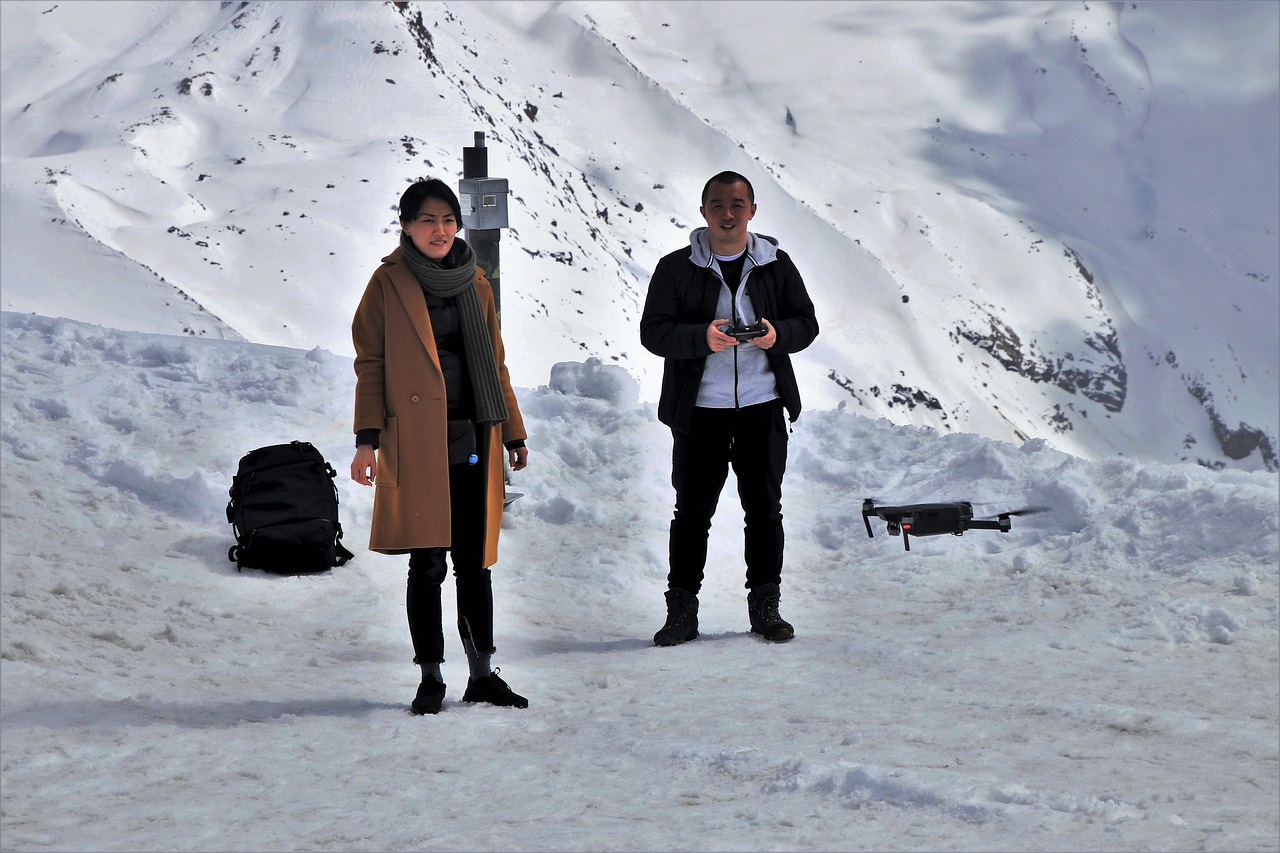
Enhanced Reconnaissance Capabilities
The RQ-11 Raven UAV is a game-changer in the realm of military reconnaissance, offering unparalleled capabilities that significantly enhance situational awareness on the battlefield. Imagine being able to see what lies ahead without putting troops in harm's way; that's precisely what the Raven accomplishes. This small yet powerful UAV allows military units to gather real-time intelligence, which is crucial for making informed decisions during operations.
One of the standout features of the RQ-11 is its ability to provide live video feeds directly to command centers and ground troops. This capability transforms how military operations are conducted. Instead of relying solely on reports from soldiers on the ground, commanders can now visualize the battlefield in real-time. This immediate access to visual data enables them to adapt strategies swiftly and effectively, ensuring that they remain one step ahead of the enemy.
Furthermore, the Raven's advanced sensors and cameras are equipped to capture high-resolution images, allowing for precise target identification. This is particularly important in complex environments where distinguishing between friend and foe can be challenging. The ability to identify targets accurately not only aids in mission planning but also reduces the risk of collateral damage, ultimately saving lives and resources.
To illustrate the impact of the RQ-11's reconnaissance capabilities, consider the following table that summarizes its key features:
| Feature | Benefit |
|---|---|
| Real-Time Video Streaming | Immediate situational awareness and decision-making support |
| High-Resolution Imaging | Accurate target identification and assessment |
| Data Integration | Seamless incorporation of intelligence into operational planning |
Moreover, the integration of the Raven with existing command and control systems further amplifies its utility. Data collected during flights can be analyzed and shared with various military units, enhancing collaborative efforts across different operational levels. This interconnectedness is vital for modern warfare, where information is power, and timely intelligence can turn the tide of battle.
In summary, the enhanced reconnaissance capabilities of the RQ-11 Raven UAV not only improve situational awareness but also empower military teams to execute missions with greater precision and safety. By leveraging cutting-edge technology, this UAV ensures that troops can focus on their objectives while minimizing risks associated with traditional reconnaissance methods.
- What is the primary function of the RQ-11 Raven UAV?
The primary function of the RQ-11 is to provide real-time reconnaissance and surveillance, enhancing situational awareness for military operations. - How does the RQ-11 improve troop safety?
By conducting reconnaissance from the air, the RQ-11 minimizes the need for ground troops to expose themselves to potential threats. - What are the limitations of the RQ-11 Raven?
The RQ-11 faces challenges such as limited flight time, susceptibility to adverse weather conditions, and the requirement for skilled operators.
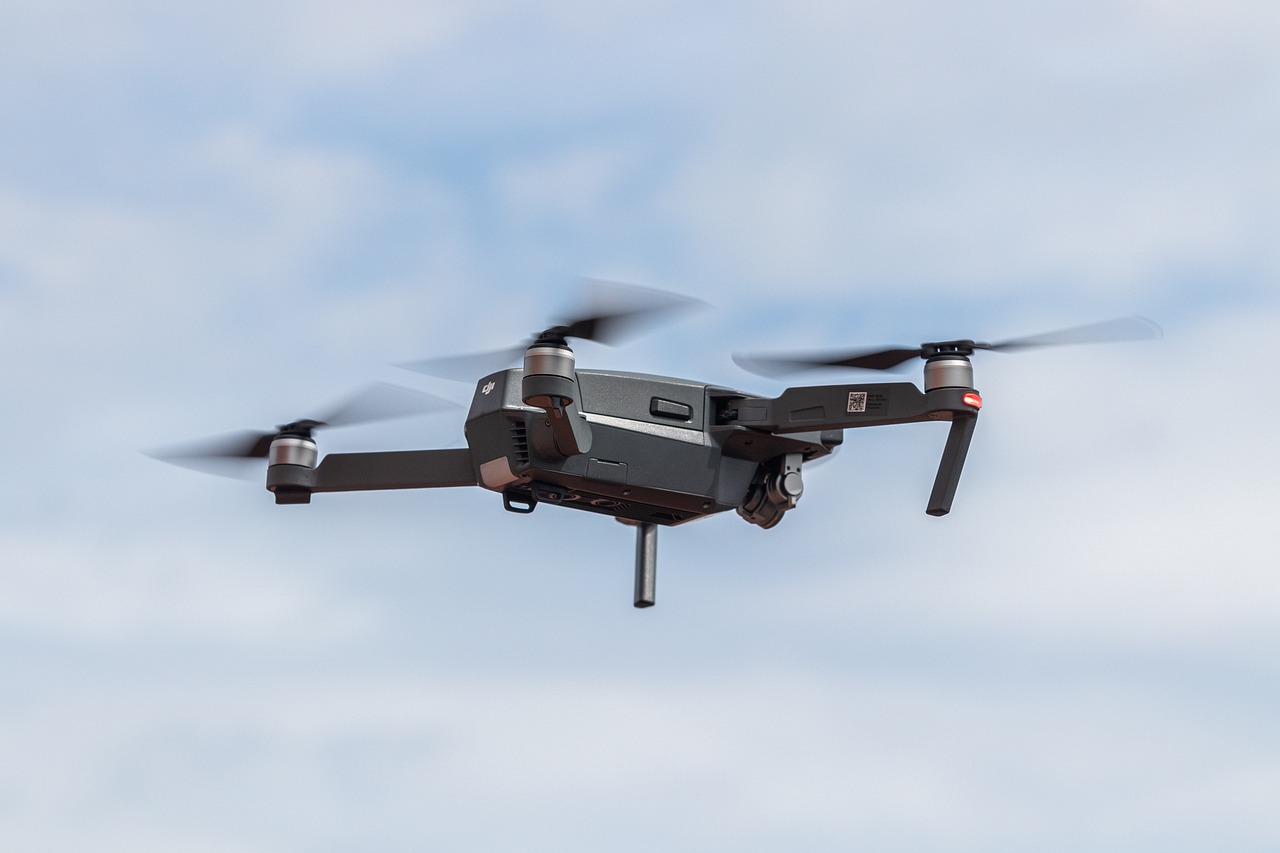
Improved Safety for Ground Troops
The RQ-11 Raven UAV plays a pivotal role in enhancing the safety of ground troops during military operations. In combat scenarios, the stakes are incredibly high, and the risks to personnel can be overwhelming. Imagine a world where soldiers can gather intelligence without stepping into the line of fire. That's precisely what the Raven offers. By utilizing this small, lightweight UAV, military units can conduct reconnaissance missions from a safe distance, significantly reducing their exposure to enemy threats.
One of the key aspects of the RQ-11's contribution to troop safety is its ability to provide real-time situational awareness. Ground troops can receive immediate video feeds and data from the UAV, allowing them to make informed decisions without having to physically scout potentially dangerous areas. This capability is akin to having an extra set of eyes in the sky, watching over soldiers as they navigate through hostile environments. The UAV acts as a sentinel, offering a protective layer that enhances operational security.
Furthermore, the RQ-11 can be deployed to assess enemy positions, identify potential ambushes, and monitor movements without putting troops at risk. For instance, if a unit is approaching an area suspected to be heavily fortified, the Raven can fly ahead to gather critical intelligence. This not only informs tactical decisions but also allows commanders to devise strategies that minimize troop casualties. In essence, the UAV transforms the battlefield dynamics, shifting the focus from brute force to intelligence-driven operations.
Moreover, the RQ-11's compact size and versatility allow it to operate in various terrains and challenging environments, from urban landscapes to rugged terrains. This adaptability means that troops can rely on it in diverse situations, ensuring that they have the necessary support regardless of where they are deployed. However, it’s essential to note that while the RQ-11 significantly enhances safety, it is not a foolproof solution. Ground forces must still exercise caution and maintain situational awareness, as the UAV is just one tool in a broader arsenal of tactical resources.
In summary, the RQ-11 Raven UAV is a game-changer for ground troops, providing improved safety through enhanced reconnaissance capabilities. By allowing military units to gather intelligence remotely, the UAV minimizes risks and helps protect the lives of those on the front lines. As technology continues to evolve, the integration of such UAVs into military operations will undoubtedly shape the future of combat, prioritizing the safety of personnel while achieving mission objectives.
- What is the RQ-11 Raven UAV?
The RQ-11 Raven is a small, lightweight unmanned aerial vehicle designed for reconnaissance and surveillance missions, primarily used by military forces. - How does the RQ-11 enhance troop safety?
By providing real-time intelligence and reconnaissance capabilities, the RQ-11 allows ground troops to assess situations without exposing themselves to direct threats. - What are the key features of the RQ-11?
It includes real-time video streaming, GPS navigation, autonomous flight capabilities, and high-resolution imaging, all of which contribute to effective mission planning. - Are there any limitations to the RQ-11?
Yes, the RQ-11 has limitations such as flight time and range, as well as susceptibility to adverse weather conditions, which can affect its performance. - Can the RQ-11 operate in various environments?
Absolutely! The RQ-11 is designed to be versatile and can operate in diverse terrains, making it suitable for a wide range of tactical scenarios.

Challenges and Limitations
While the RQ-11 Raven UAV has made significant strides in enhancing tactical situational awareness, it is not without its . Understanding these hurdles is crucial for military units looking to maximize the UAV's effectiveness in the field. One of the primary concerns is its limited flight time. The RQ-11 can typically operate for about 60 to 90 minutes, depending on various factors such as payload and operational conditions. This limitation can pose a significant challenge during extended missions where continuous surveillance is necessary.
Moreover, the operational range of the RQ-11 is another factor that can restrict its utility. With a maximum range of approximately 10 kilometers, the UAV may struggle to cover larger operational areas without requiring frequent redeployment. This limitation necessitates careful planning and coordination among tactical teams to ensure that they can maintain situational awareness across the battlefield.
Another challenge lies in the environmental factors that can affect the UAV's performance. Adverse weather conditions, such as heavy rain, strong winds, or low visibility, can significantly hinder the RQ-11's operational capabilities. For instance, flying in foggy conditions can impair its high-resolution imaging systems, making it difficult for operators to gather accurate intelligence. As a result, military planners must take into account weather forecasts and environmental conditions when deploying the Raven, often leading to delays or adjustments in mission planning.
Additionally, the RQ-11 requires skilled operators who are well-trained in its functionalities and capabilities. While the UAV is designed to be user-friendly, the complexity of its systems means that operators must undergo rigorous training to effectively utilize its features. This requirement can be a bottleneck, especially in rapidly changing operational environments where quick deployment is essential. The need for specialized training may also limit the number of personnel who can operate the UAV effectively, potentially impacting mission success.
In summary, while the RQ-11 Raven UAV offers numerous advantages in enhancing tactical situational awareness, it also faces significant challenges. From limited flight time and range to environmental constraints and the need for skilled operators, these factors must be carefully considered. Addressing these limitations through strategic planning and training can help military units maximize the UAV's potential in various operational scenarios.
- What is the typical flight time of the RQ-11 Raven?
The RQ-11 typically has a flight time ranging from 60 to 90 minutes, depending on various operational conditions. - How far can the RQ-11 operate from its launch point?
The RQ-11 has a maximum operational range of approximately 10 kilometers. - What are the environmental factors that affect the RQ-11's performance?
Adverse weather conditions such as heavy rain, strong winds, and low visibility can significantly impact the UAV's operational capabilities. - Is specialized training required to operate the RQ-11?
Yes, operators need to undergo specialized training to effectively utilize the RQ-11's features and functionalities.

Flight Time and Range Limitations
The RQ-11 Raven UAV, while a remarkable tool for reconnaissance, does have its limitations when it comes to flight time and operational range. Understanding these constraints is crucial for military planners and operators who rely on this UAV for mission success. Typically, the Raven can fly for about 60 to 90 minutes on a single battery charge, depending on various factors such as payload and weather conditions. This limited flight duration can pose challenges during extended missions, particularly in vast operational theaters where continuous surveillance is vital.
Moreover, the operational range of the RQ-11 is another critical factor to consider. The UAV has a maximum range of approximately 10 kilometers (about 6.2 miles) from its ground control station. While this range is adequate for many tactical scenarios, it can be restrictive in larger areas, requiring the UAV to frequently return to base for battery recharges or to change its position. This limitation can interrupt the flow of intelligence gathering and may necessitate the deployment of multiple units to cover a broader area effectively.
In addition to these inherent limitations, several external factors can impact the Raven's performance:
- Weather Conditions: Rain, snow, or high winds can significantly hinder flight capabilities, requiring operators to be cautious and possibly postpone missions.
- Terrain Variability: Rugged or densely forested areas can affect the UAV’s ability to maintain a stable flight path and communication with the ground station.
- Signal Interference: Urban environments may present challenges due to potential signal jamming or interference, which can limit the effective range of the UAV.
To mitigate these limitations, military strategists often employ a combination of tactics. For instance, they may utilize multiple RQ-11 units deployed in a coordinated manner to extend coverage and ensure continuous surveillance. Additionally, operators are trained to optimize flight paths and mission profiles to make the most out of the UAV's capabilities within its operational constraints.
In summary, while the RQ-11 Raven UAV is a powerful asset in enhancing tactical situational awareness, its flight time and range limitations necessitate careful planning and execution. By understanding these constraints, military teams can better leverage the UAV's strengths while compensating for its weaknesses in dynamic operational environments.
- What is the maximum flight time of the RQ-11 Raven?
The RQ-11 Raven can fly for approximately 60 to 90 minutes on a single battery charge. - What is the operational range of the RQ-11?
The UAV has a maximum operational range of about 10 kilometers (6.2 miles) from its ground control station. - Can the RQ-11 operate in adverse weather conditions?
While the RQ-11 can operate in various conditions, adverse weather such as heavy rain or strong winds can significantly affect its performance. - How can military teams overcome the limitations of the RQ-11?
By deploying multiple units and optimizing flight paths, military teams can enhance the effectiveness of the RQ-11 in tactical scenarios.
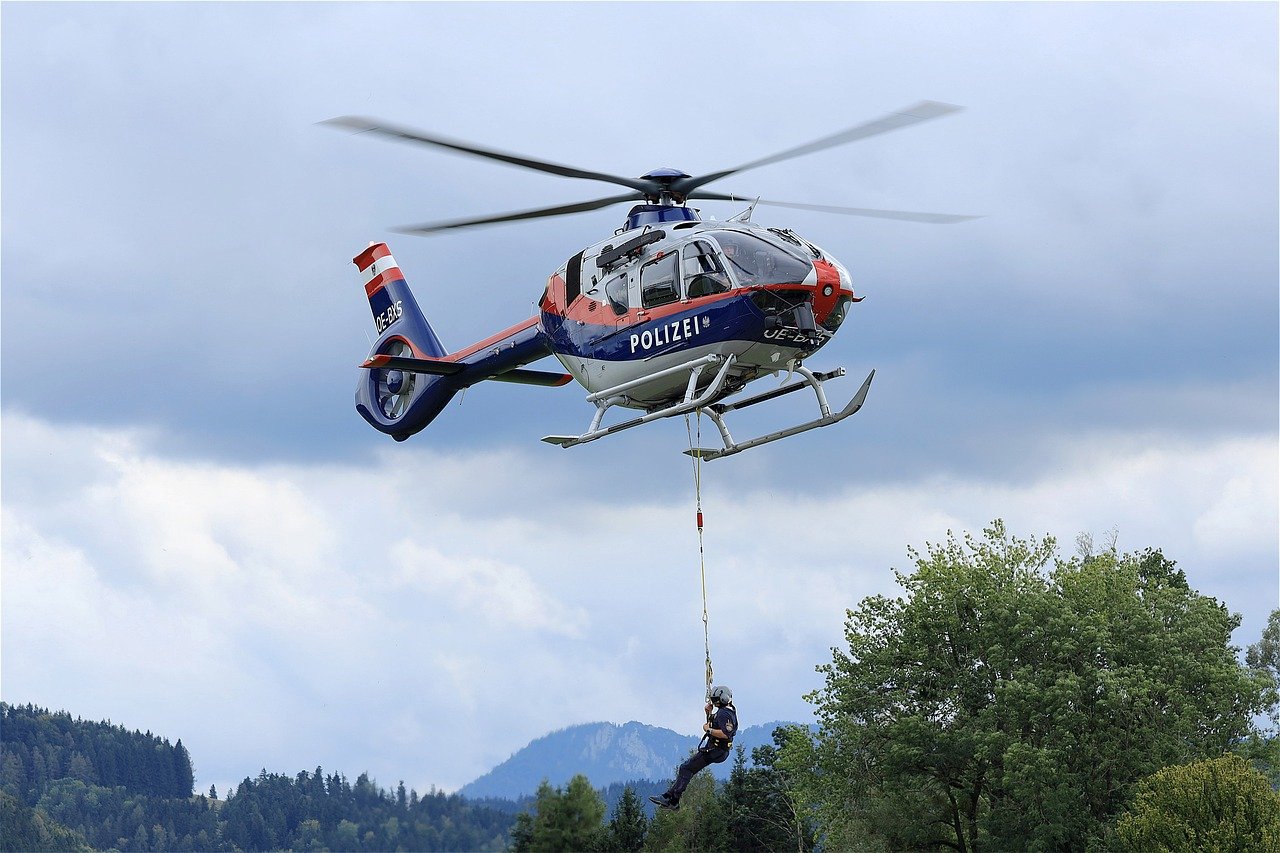
Environmental and Weather Constraints
This article explores the RQ-11 Raven UAV's capabilities, features, and impact on military operations, focusing on how it improves situational awareness for tactical teams in various environments.
The RQ-11 Raven is a small, lightweight UAV designed for reconnaissance and surveillance. Its compact size and versatility make it ideal for tactical missions in diverse operational settings.
The RQ-11 boasts several advanced features, including real-time video streaming, GPS navigation, and autonomous flight capabilities, enabling operators to gather critical intelligence quickly and efficiently.
Real-time video feeds from the RQ-11 enhance situational awareness by providing immediate visual information to ground troops, allowing for informed decision-making during missions and engagements.
The UAV's high-resolution cameras capture detailed imagery, facilitating accurate target identification and assessment, which is crucial for effective mission planning and execution.
The RQ-11 can integrate with existing command and control systems, allowing data collected during flights to be analyzed and utilized for strategic planning and operational adjustments.
With its autonomous flight capabilities, the RQ-11 can execute pre-programmed missions, reducing the workload on operators and allowing for more focus on tactical objectives.
The RQ-11 Raven provides significant operational advantages, including enhanced reconnaissance capabilities, improved troop safety, and the ability to operate in challenging environments.
The UAV's ability to gather and relay information in real-time allows military units to maintain situational awareness and adapt strategies based on current battlefield conditions.
By utilizing the RQ-11 for reconnaissance, ground troops can minimize exposure to threats, enhancing their safety while conducting operations in hostile territories.
Despite its advantages, the RQ-11 faces challenges such as limited flight time, susceptibility to environmental factors, and the need for skilled operators to maximize its potential.
The RQ-11 has a limited operational range and flight duration, which can restrict its effectiveness in extended missions or large operational areas.
Operating the RQ-11 Raven UAV is not without its challenges, particularly when it comes to environmental and weather constraints. Adverse weather conditions can significantly impact the UAV's performance and reliability. For instance, high winds can make it difficult for the Raven to maintain stable flight, while heavy rain or snow can obscure visibility and affect the quality of the data collected.
Moreover, temperature extremes can also pose a challenge. The RQ-11 is designed to operate within a specific temperature range, and exceeding these limits can lead to malfunctions or reduced effectiveness. Operators must be acutely aware of these environmental factors when planning missions, as they can determine the success or failure of reconnaissance efforts.
In addition to weather conditions, the terrain itself can also affect the UAV's performance. For example, flying in mountainous or densely forested areas can create obstacles that hinder signal transmission and data collection. Therefore, tactical teams must carefully assess the operational environment before deploying the RQ-11 to ensure optimal performance.
To summarize, while the RQ-11 Raven offers incredible capabilities, its effectiveness can be hampered by:
- High winds affecting stability
- Heavy precipitation obscuring visibility
- Temperature extremes leading to malfunctions
- Challenging terrain impacting signal quality
- What is the maximum flight time of the RQ-11 Raven?
The RQ-11 Raven typically has a maximum flight time of approximately 90 minutes, depending on environmental conditions and payload. - Can the RQ-11 operate in adverse weather conditions?
While the RQ-11 can function in light rain and moderate winds, severe weather can significantly hinder its performance. - How is the data from the RQ-11 utilized by military units?
The data collected by the RQ-11 is analyzed in real-time and integrated into command and control systems for strategic decision-making.
Frequently Asked Questions
- What is the RQ-11 Raven UAV?
The RQ-11 Raven is a small, lightweight unmanned aerial vehicle (UAV) designed primarily for reconnaissance and surveillance missions. Its compact size allows it to be easily transported and deployed in a variety of tactical environments, making it an essential tool for military operations.
- How does the RQ-11 enhance situational awareness?
The RQ-11 enhances situational awareness through its real-time video streaming capabilities, which provide immediate visual information to ground troops. This allows military personnel to make informed decisions based on current battlefield conditions, ensuring they can adapt their strategies effectively.
- What are the key features of the RQ-11 Raven?
Some of the key features of the RQ-11 Raven include high-resolution imaging capabilities, GPS navigation, and autonomous flight options. These features enable operators to gather critical intelligence quickly and efficiently, which is vital for mission success.
- What are the operational advantages of using the RQ-11?
Using the RQ-11 provides several operational advantages, such as enhanced reconnaissance capabilities, improved safety for ground troops, and the ability to operate in challenging environments. This allows military units to maintain a tactical edge while reducing risks during operations.
- What challenges does the RQ-11 face?
Despite its numerous advantages, the RQ-11 faces challenges such as limited flight time and range, susceptibility to environmental factors, and the need for skilled operators. These limitations can impact its effectiveness in certain operational scenarios.
- How does weather affect the RQ-11's performance?
Adverse weather conditions, such as strong winds or heavy rain, can significantly impact the performance of the RQ-11. Operators must carefully plan deployments to ensure optimal conditions for flight and data collection.

